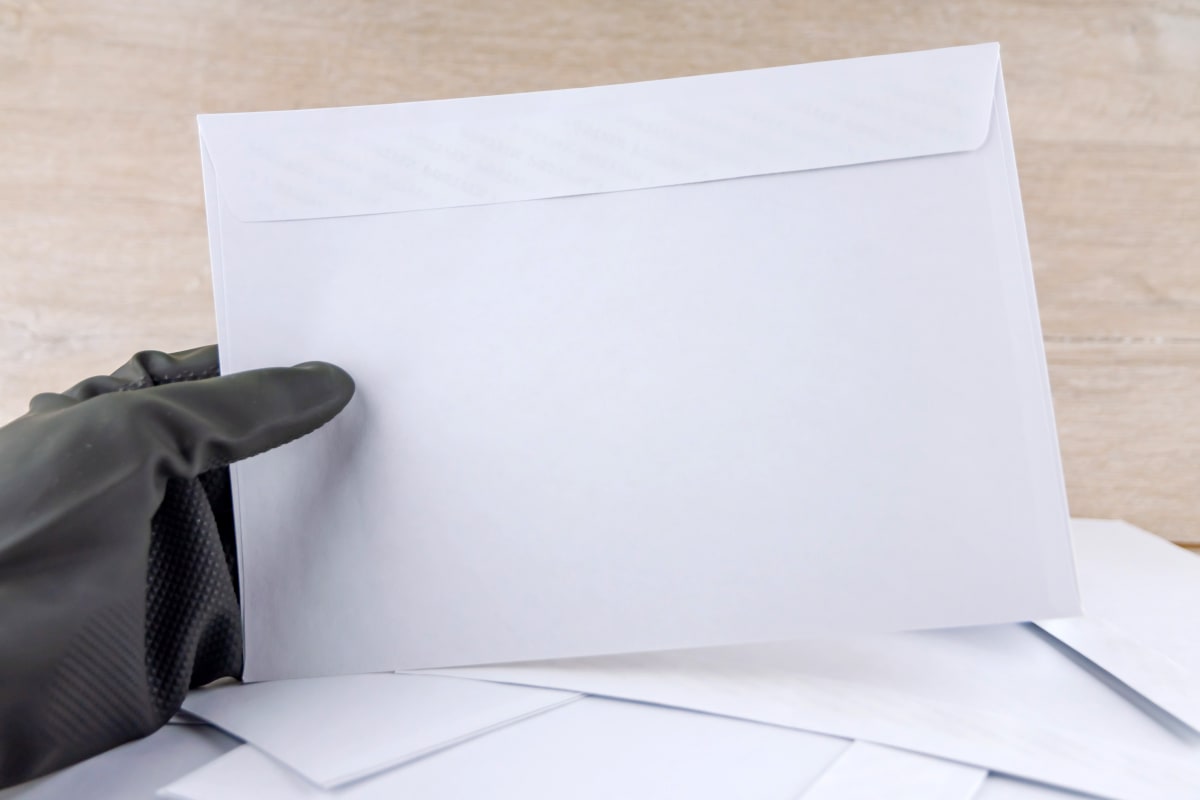Learn how to spot suspicious mail and how to protect yourself and your employees from snail mail threats.
You’re sitting at your desk opening the mail when white powder spills out from one of the envelopes. Is it a harmless hoax? Or is it anthrax or some other deadly toxic chemical?
I recall the original anthrax threat in 2001. Following the horrific 9/11 terrorist attacks on the World Trade Center and the Pentagon, letters containing anthrax spores were mailed to newspaper offices and to the Washington offices of two U.S. Senators. Five people died and more than a dozen more people were infected.
I was then the administrative officer of a Defense Department command in Philadelphia. I was sitting in my office at the naval base in Northeast Philadelphia when the planes struck the World Trade Center. As I oversaw security for the command, my job doubled that day.
Working with our military commander, the Navy base’s security people and our headquarters, we quickly instituted a series of added force protection security procedures. We prepared for subsequent terrorist attacks, and we prepared for the worst, although we had no idea what was coming next.
What came next was the anthrax letters. The deadly letters went out on September 18, 2001. Although I had chemical, biological, and nuclear security training while serving in the U.S. Navy, I worked with the local FBI office, the Postal Inspection Service, the Center for Disease Control, and other law enforcement and security agencies in an attempt to learn about and counter this new anthrax threat.
As we oversaw defense contractors located in three states, we had military and civilian employees duty-stationed at the contractors’ plants, as well as on several military bases. Like the rest of the country, our people were afraid to open the mail. I prepared an anti-terrorist briefing that included information on the anthrax mail threat and I went on the road to visit our many field offices.
I spoke before packed houses and I presented the new security procedures and trained them on how to respond if they did, in fact, receive a letter that contained the deadly white powder. The information was well received, and I believe I helped quell some of their fears.
The FBI investigation into the anthrax letters was ongoing until 2008, when a suspect, Dr. Bruce Ivins, a U.S. Army scientist, committed suicide after being notified that he was going to be prosecuted.
Law enforcement and security professionals say that the best approach to take in dealing with the threat of anthrax is to know more about anthrax.
According to the U.S. General Services Administration (GSA), anthrax is not contagious and does not spread from person to person. It is treatable and we have antibiotics that are effective. Anthrax is a bacterial disease caused by Bacillus Anthracis. Anthrax occurs in animals, including goats, sheep, cattle, horses, and deer. Anthrax is an invisible bacteria that can live in soil, water, and dead animals.
It may be contracted by breathing in spores in a closed space. It first appears as flu-like symptoms, such as fever, malaise, fatigue, cough, and mild chest discomfort followed by severe respiratory distress.
GSA’s general precautions for mail handling are:
- Examine unopened envelopes/packages and look for suspicious features.
- Handle incoming mail in a designated separate area.
- Protective impermeable gloves should be worn by all workers who handle mail.
- Avoid touching your skin, eyes, or other mucous membranes.
- Gloves can be discarded in a regular trash can once removed unless a suspicious mail piece is recognized.
- Hands should be thoroughly washed with soap and water when gloves are removed, before eating, and when replacing torn or worn gloves.
- Use a letter opener to open mail.
- Restrict mail room access to authorized person or persons.
Typical characteristics of a suspicious letter include:
- Powdery substance on the outside of the letter or package.
- Inappropriate or unusual labeling.
- Excessive postage.
- Handwritten or poorly typed addresses.
- Misspelling of common words.
- Strange return address or no return address.
- Incorrect titles or title without a name.
- Not addressed to a specific person.
- Marked with restrictions, such as “Personal,” “Confidential,” or “Do not x-ray.”
- Marked with any threatening language.
- Postmarked from a city or state that does not match the return address.
- Powdery substance felt through or appearing on the package or envelop.
- Oily stains, discolorations, or odor.
- Lopsided or uneven envelop.
- Excessive packaging material such as masking tape and string.
- Excessive weight.
If you receive a white powder-anthrax threat, the U.S. Postal Inspection Service said you should do the following:
- Do not handle the mail piece or package suspected of contamination.
- Make sure that damaged or suspicious items are isolated and the immediate area is cordoned off.
- Ensure that all persons who have touched the mail piece wash their hands with soap and water.
- Notify the police.
- List all persons who have touched the letter and/or envelope. Include contact information and have this information available for the police.
- As soon as practical, shower with soap and water.
The Postal Inspection Service assures us the mail is safe, but they suggest we take common sense precautions when handling letters and packages. Thankfully, so far the threatening white powder found in the current batch of letters have not contained anthrax.
“Even sending a hoax letter is a serious crime and law enforcement will continue to work to identify and arrest those responsible,” the FBI said in a statement. “The FBI and our law enforcement partners are following up on numerous leads.”
Disclaimer: The content on this page is for informational purposes only, and does not constitute legal, tax, or accounting advice. If you have specific questions about any of these topics, seek the counsel of a licensed professional.


